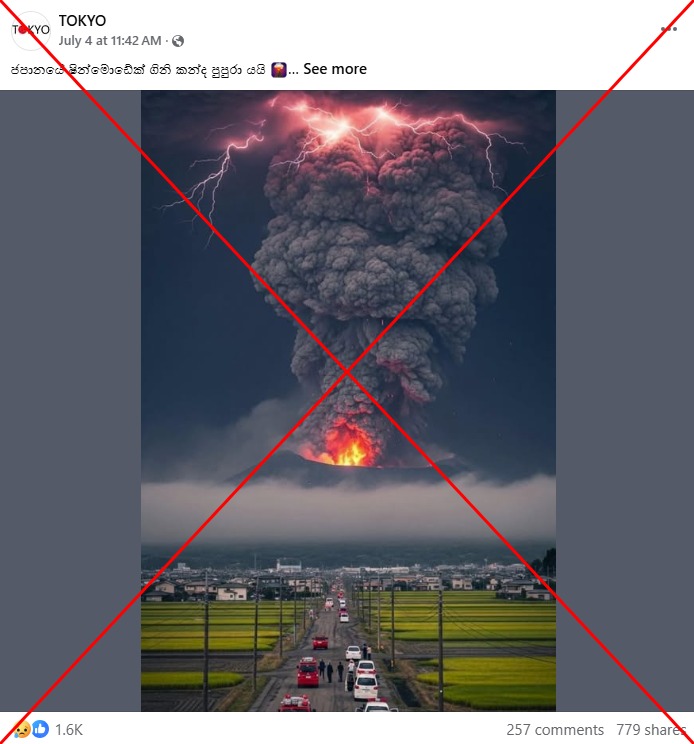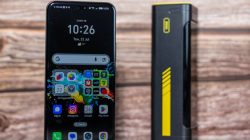The Spread of a Misleading Image About Mount Shinmoedake
An image circulating on social media platforms, particularly Facebook, has been falsely associated with the eruption of Mount Shinmoedake in Japan. The image was shared with a caption in Sinhala that claimed to depict lava and smoke spewing from the volcano. However, upon closer examination, the image does not match the actual footage captured during the eruption and shows signs of being generated using artificial intelligence.
The post, which appeared on July 4, 2025, included a description that stated, “A minor explosion was seen and due to this a plume of ash emerged 3,000 metres into the sky, and the cities across Kagoshima and Miyazaki are covered in dense smoke.” The image supposedly showed a scene of lava and thick grey smoke emerging from the volcano, with red and white cars visible in the foreground. People were also depicted stepping out of their vehicles to witness the event.
This image gained traction after Mount Shinmoedake, located in the Kirishima mountain range that borders Kagoshima and Miyazaki prefectures, erupted on June 22. Similar posts featuring the same image appeared on various Facebook pages, drawing attention from users who expressed concern for the safety of people in Japan.
One comment read, “Oh please, may no one in all of Japan face any trouble! May everyone be safe!” Another user added, “May no harm come to all those in Japan.” These reactions highlight the emotional impact of the misleading content.
Despite the image’s claims, Mount Shinmoedake has continued to emit smoke since its eruption, with plumes reportedly reaching up to 5,000 metres high. However, the image circulating online does not align with the live footage available on YouTube channels such as UMK TV Miyazaki or MBC. Viewers checking these sources on July 21 found no match with the image in question.
The Japan Times reported on July 9 that the country’s meteorological agency had restricted access to the mountain and warned about potential dangers if a full-scale magmatic eruption occurred. This warning underscores the importance of verifying information before sharing it widely.
Visual Anomalies in the Image
Upon closer inspection, the image contains several visual inconsistencies that suggest it is not genuine. For instance, the doors on a white car in the foreground are positioned incorrectly, and the people standing on the road appear to have missing limbs. These anomalies point to the possibility that the image was created using AI technology.
A keyword search led to a YouTube video titled “Japanese volcano erupts, spewing lava,” which features the same image. The video, posted on July 4, includes additional visual inconsistencies. At the three-second mark, a white car enters the bottom of the frame and crashes into the vehicle in front before disappearing almost immediately. In response to a comment on the video, the user indicated that the content was created using AI.
The Role of Generative AI in Misinformation
While generative AI technology is advancing rapidly, it still struggles with creating perfectly realistic images. Visual inconsistencies remain one of the most effective ways to identify fabricated content. As AI-generated images become more common, it is crucial for users to critically evaluate the information they encounter online.
In an era where misinformation can spread quickly, it is essential to verify the authenticity of images and videos before sharing them. This includes cross-checking with reliable sources, examining the context of the content, and being aware of the potential use of AI in creating misleading material.
As the use of AI continues to grow, so too does the need for digital literacy and critical thinking skills. By staying informed and cautious, individuals can help prevent the spread of false information and contribute to a more accurate and trustworthy online environment.







